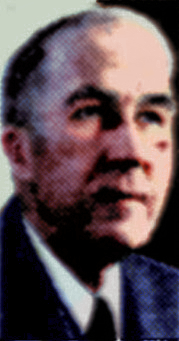
Simms: MacArthur wants status clarified on next phase of war in Pacific
His task ends with Philippines drive
By William Philip Simms, Scripps-Howard foreign editor
WASHINGTON – Official Washington is saying that there is much more between the lines of Gen. Douglas MacArthur’s “Manila-has-fallen–on-to-Tokyo!” statement than in the lines themselves which, of course, is saying a great deal.
The fall of Manila, said the General, marked the end of “one great phase of the Pacific struggle and set the stage for another” – the final phase which, no doubt, will end in the Son of Heaven’s palace in the heart of the Jap capital.
But, it is asked, who will command the Allied forces in this final “great phase”? Gen. MacArthur, himself, seems to be asking the same question. In effect, he says that his Southwest Pacific task being largely accomplished, he is ready for further assignment. “We are ready in this veteran and proven command when called upon,” he said.
Wants status clarified
Gen. MacArthur is supreme commander of Allied forces in the Southwest Pacific – land, sea and air. This includes everything from Australia up to and including the Philippines. But Adm. Chester W. Nimitz commands the Army and the Navy northward of the Philippines. Thus, China and the main islands of Japan are outside Gen. MacArthur’s theater of operations.
For these and other reasons, the General’s pronouncement is widely regarded as a strong hint that he would like to have his future status clarified. There remains, of course, much work to be done in the Southwest Pacific but, barring the unexpected, it should be mostly of a mop-up nature which does not require the permanent supervision of a five-star general.
Gen. MacArthur’s capture of Manila in 94 days from his landing on Leyte has amazed the experts. When he went ashore on October 20, most of them were convinced the war in Europe would be over before he even landed on Luzon.
Knows the Far East
Aside from his military qualities, one reason for Gen. MacArthur’s success is his thorough knowledge of the Far East, its terrain and the workings of the Oriental mind. He went to the Philippines immediately after graduating from West Point in 1903, then on to Tokyo where his father, a lieutenant general, was attaché. As his father’s aide, he was sent on a number of missions elsewhere in the East and acted as observer in the closing phases of the Russo-Japanese War.
He served several tours of duty in the Philippines after the First World War – as commander of the District of Manila, then of the whole Philippine Department, and finally, on loan from the United States, as marshal of the islands in charge of national defense under the late President Manuel Quezon.
Has flair for dramatic
Critics charge that Gen. MacArthur has a flair for the dramatic. There is some truth in this. In 1918, for instance, while his command, the famous “Rainbow Division,” was marking time, he penetrated the German lines with a small patrol. His only weapons were a pair of pliers and a swagger stick. He returned with a Boche colonel as his prisoner, prodding him along with his little stick.
Gen. MacArthur is tall, well dressed and distinctly handsome. Some people object to this. His first year at West Point was made hell for him on that account. However, through sheer ability, he won the respect of the academy, graduating with the finest scholastic record in 25 years.
These items seem to be symbolic of the man and his life. Like the late Marshal Ferdinand Foch of France, he may be dramatic, but he usually brings home the bacon. And his victories seem to have been won at a minimum of human life.
